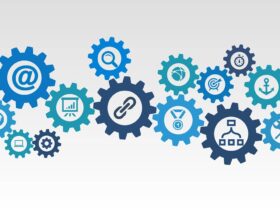A software development plan is essential for the organized management of a project because such a plan helps you gather your resources and coordinate your activities more efficiently.
We’ll guide you as you confidently move from understanding basic project concepts, identifying requirements, and scheduling timelines to monitoring deliverables, assessing costs, and risk management.
9 Essential Stages That Complete Your Software Development Journey
Entrance, Dallas software development experts maintain that no matter what process you choose, there are nine essential stages you’ll be going through in your software development project.
Project Analysis: Is The Venture Viable?
It’s called the make or break moment when you decide the project’s feasibility. In-depth analysis should:
- Make the purpose (concepts and goals) of the project clear.
- Get a deeper understanding of the needs (workforce and resources) of the project.
- Break down the project specifications so that you don’t miss anything critical to the project’s success.
Project Requirements: Mapping The Software Journey
The successful delivery of a software product depends on three crucial factors:
- Creation of the team and gathering skills necessary for software development
- Documenting the technical requirements needed for delivering the product within specified timelines
- You decide the testing and feedback monitoring milestones to exercise precise control over the outcome.
The data will be of immense use when the company starts sprint planning for Agile ecosystems.
Project Planning: How Are You Executing The Development Cycle?
It’s the right thing to do to ideate and fix a timeline for completing the project.
- Fixing a timeline gives team members an overview of the software development cycle so members can synchronize better.
- By breaking down the project into steps and subtasks, you get a grip on the resources, time, and budget needed to finish the job.
- Using Gantt charts can help you visualize the timeline and how each stage/strategy/sub-task can be tracked from start to finish.
The primary purpose of planning is to ensure tasks are monitored, deliverables are tracked, costs are contained, and goals are achieved.
Design And Prototyping: How Does The Product Work And Feel?
At this stage, the product is constructed and deconstructed using prototypes. Designing and prototyping ensure that the flow, structure, and functionalities are not compromised as the product develops.
Selective feedback gathered from the user audience tells you whether the proposed features are helpful and have value addition.
Measuring And Tracking Progress: Are You Creating A Superior Product?
When developing software, coding quality issues are likely to present roadblocks in the product life cycle. Project and development analytics experts like Dallas software development companies give you the software metrics to track and measure performance and code quality.
Analytics metrics help you build software faster with optimum use of resources and increase inter-personal collaboration within the team.
Development And Coding: Are You Customizing Code To Your Requirements?
We have the workforce, the resources, a well-chalked-out plan, and the tools for tracking our work. We now enter the most time-consuming part – starting to build the software solution as per the specifications defining the project.
In larger projects with more considerable gestation periods, the development complexity will be higher as various integrations and functionalities have to be resolved. Success lies in building stable, bug-free, efficient products that pose a minimum risk.
Testing And Quality Control: Is Your Product Performing Efficiently And Reliably?
Quality testing is a must before software hits the market, and you need to consider three critical issues:
- Compliance with project requirements and industry regulations.
- We are ensuring budgetary compliance and adherence to established timelines.
- Maintaining clean, efficient, and reliable coding ensures better safety and reliability of the product.
In an Agile ecosystem, you can expect both development and testing to be held simultaneously. The aim is to ensure we develop bug-free products and are ready to deploy.
More companies are readying to engage external teams for testing and quality assurance and ensuring that no effort is spared in making an unbiased assessment of this critical stage in the development cycle.
Deployment And Production: Is Your Product Ready To Face The Market Challenge?
Companies hope that the meticulous care invested in coding quilty will pay off in smooth product deployment at this crucial moment. Rolling out the product can be a multi-tiered process:
- A series of build-deploy-testing modules are carried out.
- The most competent release product is almost finalized.
- Pre-release product testing is performed.
- If the product is stable, it receives the nod of approval.
- Product clearing the testing and quality control metrics is OK for production.
- Support And Maintenance: Are You Conscious Of Product Quality And Service You’re Providing?
After production and deployment, the support and maintenance functions take over, ensuring that customers’ needs are taken care of with regular updates and bug fixing.
As customer preferences change in tune with evolving markets, new features and functionalities are added.
Conclusion
Be crystal clear in communicating your goals and vision as you maneuver the team into mission mode.
Ensure that the solutions you evolve are problem-centric and deliver clear business benefits. Strengthen the positive vibes by creating a team with a clear focus on solutions that help the company break new ground in a competitive market.










FIND US ON SOCIALS